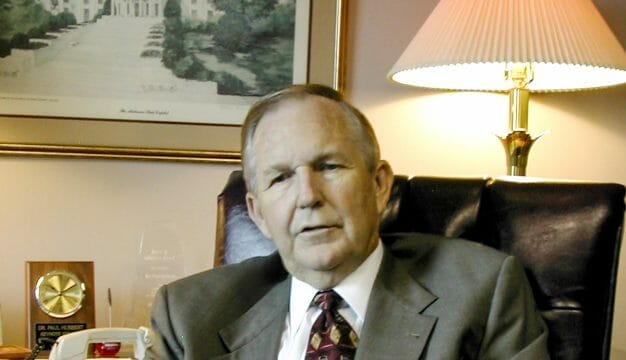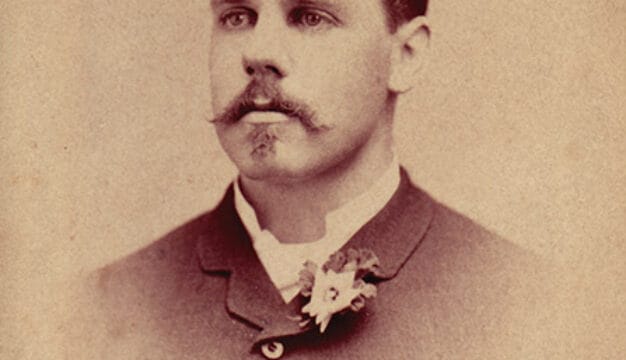Cummings Research Park
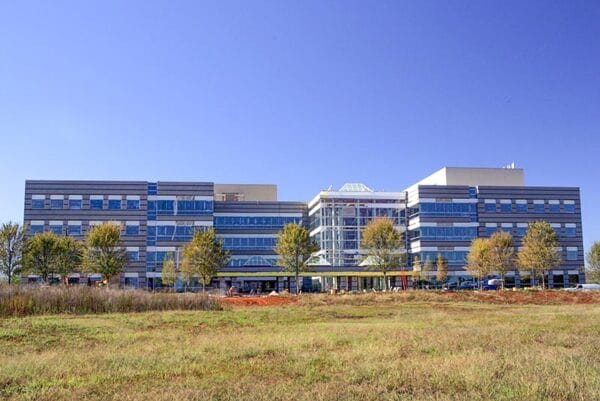 HudsonAlpha Institute for Biotechnology
Located in Huntsville, Madison County, Cummings Research Park (CRP) is the second largest research and technology park in the nation, after Research Triangle, North Carolina, and the fourth largest in the world. With the University of Alabama in Huntsville (UAH) as its anchor tenant, Cummings Research Park is home to 300 companies with a combined workforce of more than 26,000 employees. Companies located in CRP range from aerospace and defense firms to the telecommunications industry to biotechnology research companies. Since its establishment in 1962 as the Huntsville Research Park, CRP has received national and international recognition, including an award in 1997 from the Association of University Research Parks as the Most Outstanding Research/Science Park in the World and in 2017 received that organization’s Developing Communities of Innovation Award.
HudsonAlpha Institute for Biotechnology
Located in Huntsville, Madison County, Cummings Research Park (CRP) is the second largest research and technology park in the nation, after Research Triangle, North Carolina, and the fourth largest in the world. With the University of Alabama in Huntsville (UAH) as its anchor tenant, Cummings Research Park is home to 300 companies with a combined workforce of more than 26,000 employees. Companies located in CRP range from aerospace and defense firms to the telecommunications industry to biotechnology research companies. Since its establishment in 1962 as the Huntsville Research Park, CRP has received national and international recognition, including an award in 1997 from the Association of University Research Parks as the Most Outstanding Research/Science Park in the World and in 2017 received that organization’s Developing Communities of Innovation Award.
The history of Cummings Research Park reflects the changing economic landscape of Huntsville from a cotton town to a high-tech center. In 1950, the property on which the park now sits was a patchwork of farmland. That same year, the U.S. government transferred a team of 118 German rocket engineers to Huntsville to work at the Army’s Redstone Arsenal. Under the direction of German rocket engineer Wernher von Braun, the engineers and scientists were charged with developing rockets for the Army Ballistic Missile Agency (ABMA). This mission shifted to space rockets and satellite development after the Soviet Union launched the satellite known as Sputnik.
The success of Explorer I catapulted Huntsville into the national spotlight and led the federal government to accelerate its efforts to explore space. NASA opened the Marshall Space Flight Center (MSFC) on July 1, 1960, at Redstone Arsenal, with von Braun as director. Many people who worked on the army’s Explorer I mission were transferred to Marshall’s space program.
 Boeing at Cummings Research Park
As the nation’s space program grew, research activities in the Huntsville area expanded. The city also saw an influx of private companies that provided technology and manufacturing for the activities at Marshall and Redstone Arsenal, including Chrysler, Boeing, Lockheed, IBM, and Northrop. Von Braun’s team, along with community leaders and company executives, sought to form a partnership and began promoting the idea of a research center that would be affiliated with what is now UAH. They believed it would not only support space and technology research but also provide a prime location for industrial growth. In 1961, von Braun lobbied the Alabama legislature for a research center that would include a university, research institute and industrial park. Lawmakers supported the idea and pledged to invest $3 million in the project.
Boeing at Cummings Research Park
As the nation’s space program grew, research activities in the Huntsville area expanded. The city also saw an influx of private companies that provided technology and manufacturing for the activities at Marshall and Redstone Arsenal, including Chrysler, Boeing, Lockheed, IBM, and Northrop. Von Braun’s team, along with community leaders and company executives, sought to form a partnership and began promoting the idea of a research center that would be affiliated with what is now UAH. They believed it would not only support space and technology research but also provide a prime location for industrial growth. In 1961, von Braun lobbied the Alabama legislature for a research center that would include a university, research institute and industrial park. Lawmakers supported the idea and pledged to invest $3 million in the project.
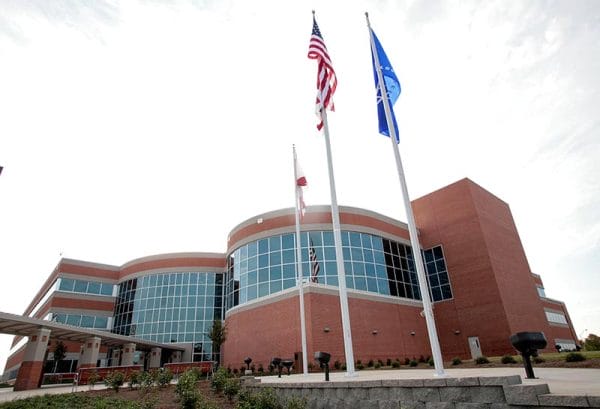 Lockheed Martin Headquarters
Two company executives who were instrumental in the development of Cummings Research Park were Brown Engineering president Milton Cummings and vice president Joe Moquin. The company had provided engineering services and technical support for both the ABMA and the Explorer I mission. At the time of Explorer I, Brown Engineering was operating out of the Huntsville Industrial Center, known as the HIC building. As Army and NASA work increased, however, Cummings and Moquin saw benefits to relocating closer to Redstone Arsenal. Cummings purchased property on Sparkman Drive across from the developing university and in close proximity to the arsenal. He set aside some of the property for the new Brown Engineering facility and sold the rest at cost to companies wanting to locate in the park. His intent was to encourage development and prevent land speculation.
Lockheed Martin Headquarters
Two company executives who were instrumental in the development of Cummings Research Park were Brown Engineering president Milton Cummings and vice president Joe Moquin. The company had provided engineering services and technical support for both the ABMA and the Explorer I mission. At the time of Explorer I, Brown Engineering was operating out of the Huntsville Industrial Center, known as the HIC building. As Army and NASA work increased, however, Cummings and Moquin saw benefits to relocating closer to Redstone Arsenal. Cummings purchased property on Sparkman Drive across from the developing university and in close proximity to the arsenal. He set aside some of the property for the new Brown Engineering facility and sold the rest at cost to companies wanting to locate in the park. His intent was to encourage development and prevent land speculation.
The Huntsville Research Park was established officially in March 1962, with the land being managed by the UAH Foundation, a nonprofit organization comprised of community and business leaders. City leaders declared more than 3,000 acres, including the Cummings property, as a “research park district.” The new zoning insured that only research and high-tech companies could open facilities on the property. Brown Engineering (now Teledyne Brown Engineering) was the first company to locate in the park. In 1973, city leaders renamed the park Cummings Research Park in honor of Milton Cummings.
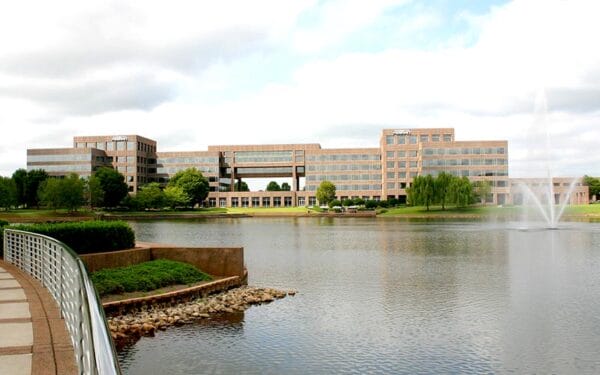 ADTRAN at Cummings Research Park
The park is now home to some of the nation’s top defense and aerospace firms, including SAIC, Northrop Grumman, and Boeing. Other companies include ADTRAN, a multinational telecom corporation, and Hudson Alpha Institute bio-technology research center. Cutting-edge research conducted at the park takes place in the fields of applied optics, propulsion, modeling and simulation, radar, and remote sensing.
ADTRAN at Cummings Research Park
The park is now home to some of the nation’s top defense and aerospace firms, including SAIC, Northrop Grumman, and Boeing. Other companies include ADTRAN, a multinational telecom corporation, and Hudson Alpha Institute bio-technology research center. Cutting-edge research conducted at the park takes place in the fields of applied optics, propulsion, modeling and simulation, radar, and remote sensing.
Seeing a need for future expansion, in 1982, the city began developing a second phase of CRP, known as Cummings Research Park West, by purchasing 800 acres on the west side of Research Park Boulevard. In 2007, Bridge Street Towne Center, a retail, residential, and hospitality component, was added to the park. Cummings Research Park now covers almost 4,000 acres and has more than 11 million square feet of research, development, administration, and manufacturing space. There are more than 175 buildings on site. Organizations wishing to locate at Cummings Research park must purchase land from the city of Huntsville and adhere to zoning guidelines regarding their purpose, construction, and design.
The Huntsville/Madison County Chamber of Commerce serves as the major recruiter for industries to not only the park, but also the general area. Day-to-day operations are supervised by a director and assistant, employed by the Chamber. A 10-member board advises the city on matters in the best interests of the park and makes recommendations about the suitability of companies wishing to establish facilities. Board members serve seven-year terms and represent companies located in the park, the mayor’s staff, the city council, and the planning commission.


